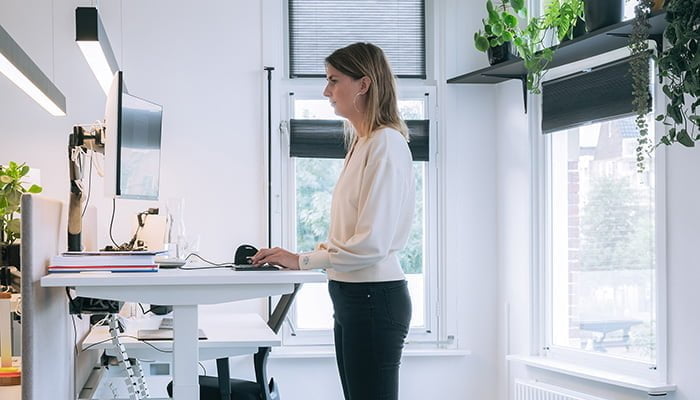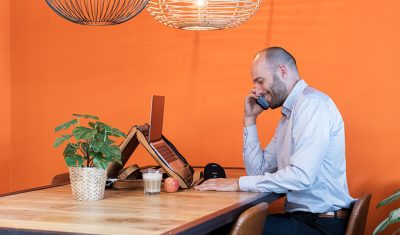It is now common knowledge that a lot of sitting can cause health problems. The less we sit, the better. Does this mean we should all work standing up?

Benefits of standing while at work
Compared to sitting, standing has a number of advantages. It is believed that working standing lowers blood sugar levels faster after a meal than working sitting. Standing is also thought to reduce the risk of back and shoulder complaints. Meanwhile, numerous sit-stand tables have made their appearance in Dutch offices. With these, employers want to reduce the risk of sick leave.
The disadvantages of prolonged standing
However, research has shown that prolonged standing work can cause leg and foot fatigue, back and neck pain and varicose veins.
In August 2017, a study was published by Oxford University on the relationship between sedentary and standing work and the risk of heart disease. This 12-year study took place in Canada and found that prolonged standing can increase the risk of cardiovascular disease. That’s because standing for too long can lead to blood accumulation in the legs, increased pressure in the veins and increased oxidative stress (chemical imbalance in the body), all of which can contribute to increased risk. Prolonged standing at work doubles the risk of cardiovascular disease.
Unfavorable standing posture
In addition, practice shows that we often stand in the wrong posture. An unfavourable standing posture (hanging on one leg, leaning on the table, wearing high heels, hunching over…) increases the risk of strain.
For decades, guidelines have existed in the Dutch Health and Safety Act for the above reasons to minimise standing work precisely. The Dutch Labour Information Sheet (08) “Sitting and Standing Work” advises that standing for more than 1 hour at a time and standing for more than 4 hours in a day should be avoided as much as possible! That sounds a little strange, doesn’t it?
Want to read more? Download our white paper.


